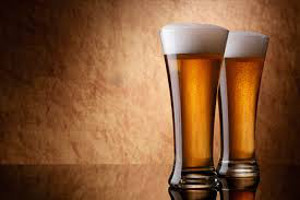 rs Brewing Co. discovered this in China, where it altered the cold activated bottles and cans last year for Coors Light featuring images of the Rocky Mountains that turn blue when the beer is at ice cold temperatures.
rs Brewing Co. discovered this in China, where it altered the cold activated bottles and cans last year for Coors Light featuring images of the Rocky Mountains that turn blue when the beer is at ice cold temperatures.Drinking cold liquids is widely seen as undesirable in China. Warmer beverages are considered healthier for digestion, an idea that also stems from the traditional habit of boiling water to make it safer to drink.
In light of this custom, “we dropped the temperature for the thermochromatic ink, and it still turns blue, but it’s not so cold,” Peter Swinburn, chief executive officer of Molson Coors, said in an interview last week.
The mountains on the cans and bottles turn blue at 41 to 44.6 degrees Fahrenheit (5 to 7 degrees Celsius) in China, while the color changes at about 39.2 degrees Fahrenheit in the U.S.
Such attention to detail is key to Molson Coors as it pursues growth in developing markets. Rising incomes and a growing middle class are helping drive sales in countries such as India and China, where beer volume is predicted to grow 7.9 percent and 3.6 percent in the five years ending 2018, according to Euromonitor International. Volume is forecast to fall in the U.S. and U.K by 0.7 percent.
Local Habits
Molson Coors, which has dual headquarters in Denver and Montreal, began expanding in developing countries over the past four years. In addition to its recognizable brands such as Coors Light and Carling, the company has a portfolio of local beers that cater to cultural palettes. In April, Royal Brew -- a whiskey flavored beer -- was introduced in India, appealing to the country’s preference for hard liquor.
“We take into account local drinking habits, but brand identity will remain the same,” said Krishnan Anand, president and CEO of Molson Coors International, who points out that in contrast to China, people in many of the Caribbean island countries drink Coors Light at freezing temperatures.
The company has paid particular attention to China, where development began a decade ago. Sales in China have had a steady growth rate of 15 percent to 20 percent for the past eight years, according to Anand.
Molson Coors’ core markets - the U.S., U.K., and Canada - are in decline, said Brian Yarbrough, analyst at Edward Jones & Co. in St. Louis.
International Volume
“They are looking for faster growing markets to see consumption trends move up, which is why they’re looking to international markets,” said Yarbrough, who has a hold rating on the shares.
As international volume almost tripled in the past four years, Molson Coors is able to reduce investment per hectoliter of beer, according to Colin Wheeler, a company spokesman. The company’s international unit is still “in investment mode” and close to reaching profitability, he said.
The international side is a very small part of Molson Coors’ business so far, Yarbrough said. The company continues to invest internationally, even as it loses money, because it places the brand in a market with rapidly growing opportunities, he said.
Molson Coors’s international revenue - excluding Canada, the U.K. and Europe - surged 69 percent to $137.6 million in the three years through 2013. Sales from the company’s MillerCoors LLC U.S. joint venture with SABMiller Plc rose 3 percent to $7.8 billion in that time.
Rather than buying large local companies like its competitors, Molson Coors seeds brands through marketing and innovation, Anand said.
“Ours is the old fashioned way of taking our brand and building it country by country, bar by bar, and consumer to consumer,” he said.





